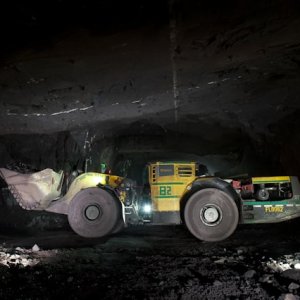In Search of a Late-Stage Latin American Project

STORY INLINE POST
When deciding where to set up shop, operators look at more than metal availability. Chief among the priorities is determining whether or not the company will be welcome by the community, says James Bannantine, President and CEO of Great Panther Silver. “The first consideration for a mining company should be to go where it is wanted,” he says. “Mining activities have to be invited.”
Once the welcome mat is in place, other key considerations are logistics, infrastructure and human talent, areas in which Mexico has strong advantages. “The country has great infrastructure, logistics and it is right next to the US,” Bannantine says. “There are great ports, good construction and engineering firms, a strong supply chain, high-tech equipment, experienced contractors and a talented workforce, all of which are critical to our business.”
Great Panther Silver owns the Guanajuato Mine Complex, which consists of two underground mines: San Ignacio and Guanajuato. The operation serves as the company’s administrative and technical base in Mexico. In January 2018, Great Panther Silver announced that it had doubled its measured and indicated resources estimate at the Guanajuato Mine Complex to over 13 million silver equivalent ounces. Estimated measured resources alone at San Ignacio increased by 121 percent to 9.3 million silver equivalent ounces and at Guanajuato by 33 percent to 1.8 million silver equivalent ounces. “This takes the mine’s life from four to eight years and we are continuing our drilling programs to find new resources and extend mine life,” says Bannantine.
Investment is also being allocated to the Topia Mine in Durango. At the beginning of 2017, the company upgraded its plant and is transitioning to a new tailings facility. This expansion increased Great Panther Silver’s 2017 AISC but Bannantine says on average, all mines are operating at a steady level, at about 4 million ounces of silver equivalent per year. “We are making money as a company,” he says.
As well as investing in expansion, Great Panther is looking further down the road to advance its exploration pipeline. In Mexico, the 20,400ha Santa Rosa silver-gold property is located 15km northeast of Guanajuato. Although the project is at the grassroots stage, Great Panther has reason to be optimistic about its potential since it crosses known veins on the Sierra Vein system. Its other Mexican exploration property is El Horcón, located in Jalisco. “El Horcón is a historic mining operation with gold, silver, lead, and zinc mineralization but the extent of past production is unknown,” says Bannantine. It holds nine known veins, with the Diamantillo Vein traceable on the surface for more than 4km. Limited previous drilling and Great Panther having drilled only 2,147m in 24 holes means the property’s potential is also largely unknown.
On an international note, the company is looking to bring back into production the Coricancha Mine in Peru that it acquired in 2017. It is also interested in acquiring an additional advanced stage project or mine in Latin America. “We have US$60 million in cash and no debt,” says Bannantine. “We have a clean balance sheet that is sufficient to fund the restart of Coricancha and also to acquire a new project.” To identify the right opportunity, the company has an expert team looking for a late-stage, brownfield project, with 4 million ounces of silver equivalent or more, that is ready for the construction phase. He says that Mexico’s reputation as a silver producer places it at an advantage over other jurisdictions being examined by Great Panther. “Silver first, gold second,” he says. “Mexico first, Peru second and Brazil third.”
The company expects to acquire its next project through existing liquidity. Bannantine remains open to considering other financial mechanisms, such as streaming agreements, but he believes that the tool should be carefully considered before being employed. “A stream is listed as a liability on the company balance sheet and on the mine,” he says.
The company provided 2018 guidance of 4 million ounces of silver equivalent on a US$12-13 AISC and a corresponding profit of US$68 million. Bannantine expects to pump much of the budget into drilling in 2018, with 24,000m planned. “We are going to keep drilling around our mines, rather than carrying out greenfield exploration,” he says





















